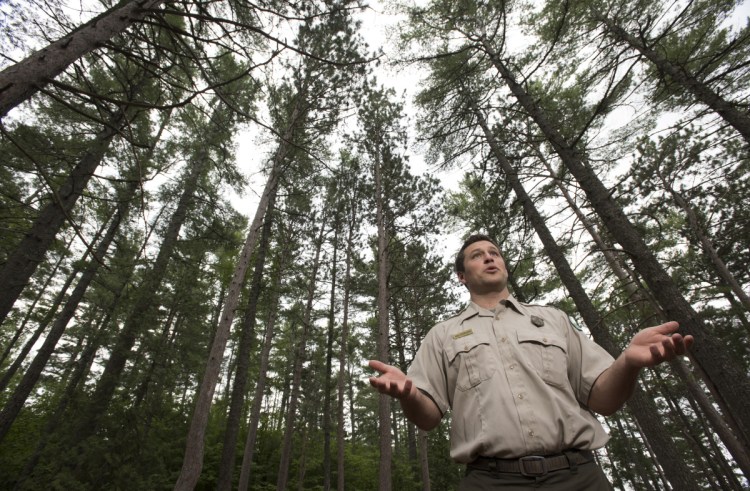Remote and largely unaltered by human hands or machinery, Baxter State Park is truly something else.
It is that way – the way it has always been – because its overseers have always dedicated themselves to keeping the 209,000-acre park, in the words of its benefactor Gov. Percival Baxter, “forever wild.”
That task will now fall to Eben Sypitkowski, the park’s new director, who takes the job at a critical juncture in the region’s history. Baxter State Park is as popular as it has ever been, and Katahdin Woods and Waters National Monument is bringing new eyes to the area. It is an exciting time for the Katahdin region, but it is not without conflicting visions for the future, and threats to the park’s character.
After increasing year by year since 2008, visits to Baxter State Park topped 73,000 in 2016, and the numbers dipped only slightly last year. The more people who visit, the harder it is to maintain the park’s 220 miles of trails, and perhaps its central mission as well.
Visitors are drawn to Baxter’s untamed wilderness, sure, but once there, the lack of amenities can be a bit of a shock – something they are just not used to in our constantly connected world.
Hikers on the Appalachian Trail, too, can have unrealistic expectations of what will greet them once they reach Mount Katahdin, the trail’s northern terminus. The number of those hikers has increased significantly in recent years and is expected to continue to rise, bringing people accustomed to certain amenities and services that are no longer available once they reach the deep Maine wilderness.
Baxter officials have seen this coming and say they don’t need, or even particularly want, additional visitors. But it looks like the park is going to get them, particularly with the new national monument next door.
Of course, the whole point of the national monument is to draw more visitors. That’s how it was sold to the region’s residents, and why it eventually won so much support among local businesses, which for years had fought a similar proposal, that they are ready to embrace the region’s recreation-based economy like never before.
The national monument, through the federal Interior Department, will be run under different rules than Baxter State Park, even though they will share a long north-south border on Baxter’s eastern side. So there are questions not only about how the two entities will handle visitors passing between the park and the monument, but also about whether visitors to the monument will appreciate how Baxter is run.
So may begin the call for Baxter to consider cellphone towers, running water, better roads and signage, and less-primitive campsites – a more modern, comfortable experience.
That, of course, would ruin what makes Baxter so special. Park officials have resisted the temptation to make changes before, and Sypitkowski has said that he takes Percival Baxter’s words to heart, so it appears the park is in good hands.
It may be 2018 out here, but Baxter State Park remains stuck in the past. And nothing should be allowed to shake it free.
Send questions/comments to the editors.



Comments are no longer available on this story